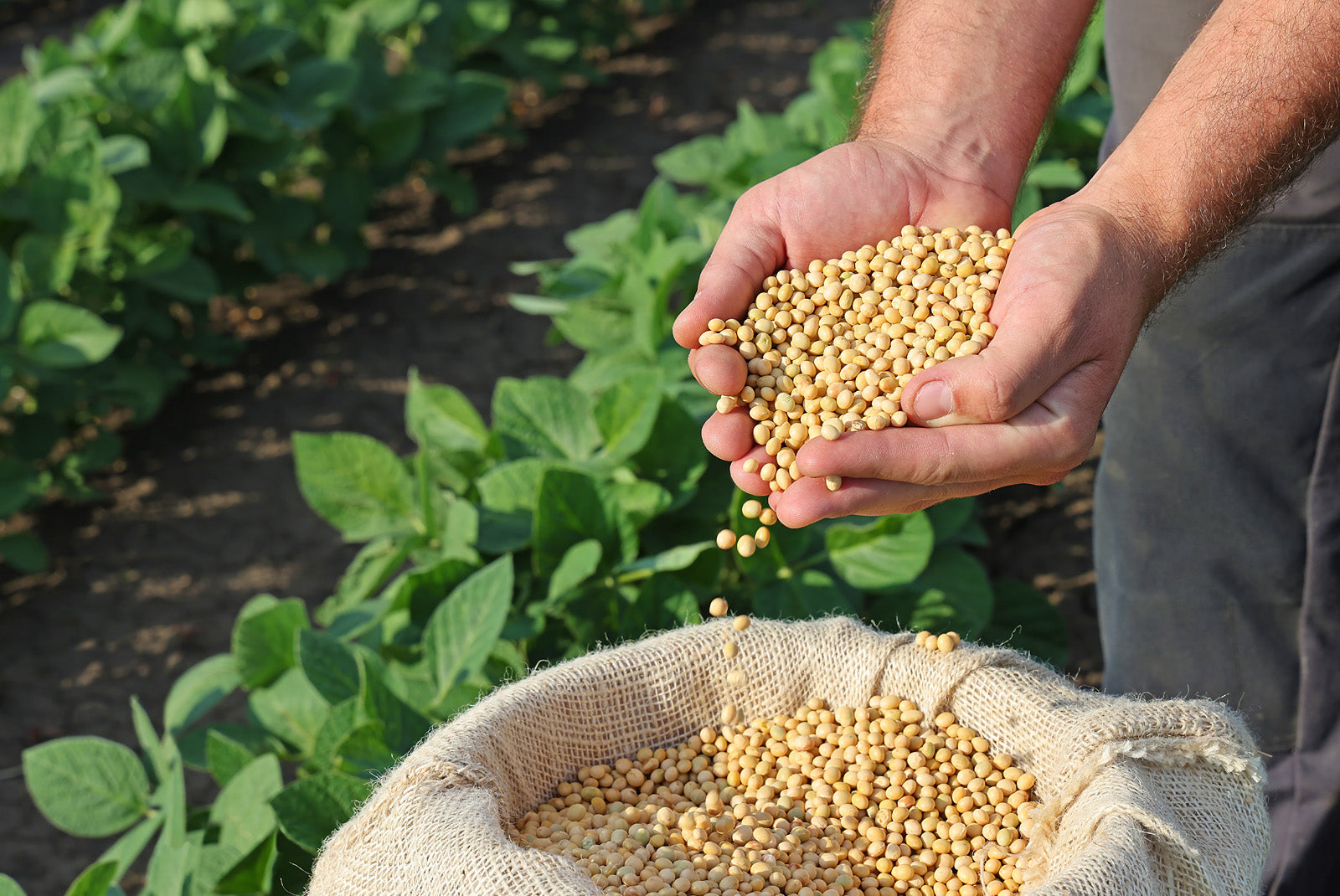The changing soybean market requires new solutions in quality control

The soybean market is growing substantially year after year, but at the same time, the ways of consuming soybean products change as global market trends are driving e.g. vegan options in the food industry. This requires ever increasing precision in monitoring the quality of soybeans. Modern, portable, and easily accessible measuring solutions are sought after in all levels of the soybean value chain.
Soybeans are the major source of plant protein and oil in the world. Commercial soybean varieties usually contain ~40% protein and ~20% oil (on a dry weight basis) (Baianu et al. 2012). Numerous health benefits have been identified from soybean products, such as high nutrient content of fibers, protein, antioxidants, phytoestrogens, and omega-3 fatty acids, among others (EMR report 2023). Soybean is popular as a healthy alternative to cholesterol, fat-rich food, and dairy products.
As the demand for high quality, protein rich soybean products are increasing, the quality measurement becomes more and more important in different stages of the value chain. The change in the market demand leads to producers of soybean redirecting their resources and final output for the human consumption. As they do so they need to improve the quality of their soybean to have the proper fatty acids and protein content.
Easy, real-time quality control
Currently there are different possibilities for the quality analysis of soybeans on the market. The more traditional way is to use agricultural lab testing services, but these analytical processes are time-consuming and laborious and the chemical reagents that are used contribute to environmental pollution (Zhu et al. 2018). They are also expensive and impractical for measurements on large numbers of soybean samples (Baianu et al. 2012).
At the same time, modern solutions in quality measurements are now accessible to many actors in the soybean industry, from field to food processing. Near-infrared spectroscopy (NIRS) is a rapid technique that can be used for simultaneous detection and analysis of multiple components; moisture, protein, fat, and carbohydrate all fall within the NIR region (Zhu et al. 2018). NIRS is nondestructive, fast and needs no complicated sample pretreatment.
GrainSense has transformed bulky Near-Infrared (NIR) spectroscopy lab-style equipment to convenient solutions that work in real-time in everyday work at the field, in handling and storage, as well as in further processing stages. These solutions help the soybean sector businesses track quality instantly, anywhere.
The GrainSense Analyzers use the same NIR spectroscopy technology found in laboratory instruments – now in new type of devices for the field, processing, and storage. The innovative way of using the NIRS technology in GrainSense solutions allows to measure the quality from just a few grams to tons of soybeans. For example, the A2 version of the Handheld Analyzer with the glassless tray option supports measuring whole soybeans in small sample sizes quickly and easily. On the other hand, the Flow Analyzer works in soybean flow environments, e.g. silos, and can make measurements on large volume batches.
GrainSense is releasing annual calibration data for different market areas for their licensed customers, as well as constantly improving the overall calibration of soybean in their analyzers. Having the real-time quality data on their fingertips, GrainSense helps soybean farmers and buyers make critical decisions and arms them with the knowledge and confidence to act fast.
While working towards even more accurate calibrations, we are participating in the World Soybean Research Conference 11 (WSRC11) from 18 – 23 June 2023, in Vienna. Come and meet us there – and see the GrainSense Handheld Analyzer in action!
Read more from our blog how Taifun Tofu uses the GrainSense A2 HandHeld Analyzer in their acquisition points to track quality.
Sources:
Baianu I. C., You T., Costescu D.M., Lozano P.R., Prisecaru V., Nelson R. L.: Determination of Soybean Oil, Protein and Amino Acid Residues in Soybean Seeds by High Resolution Nuclear Magnetic Resonance (NMRS) and Near Infrared (NIRS). Nature Precedings : doi:10.1038/npre.2012.7053.1 : Posted 30 Mar 2012.
EMR Expert Market Research, the EMR report 2023
https://www.expertmarketresearch.com/reports/soybean-market
Zhu Z, Chen S, Wu X, Xing C, Yuan J. Determination of soybean routine quality parameters using near-infrared spectroscopy. Food Sci Nutr. 2018;6:1109–1118. https://doi.org/10.1002/fsn3.652




